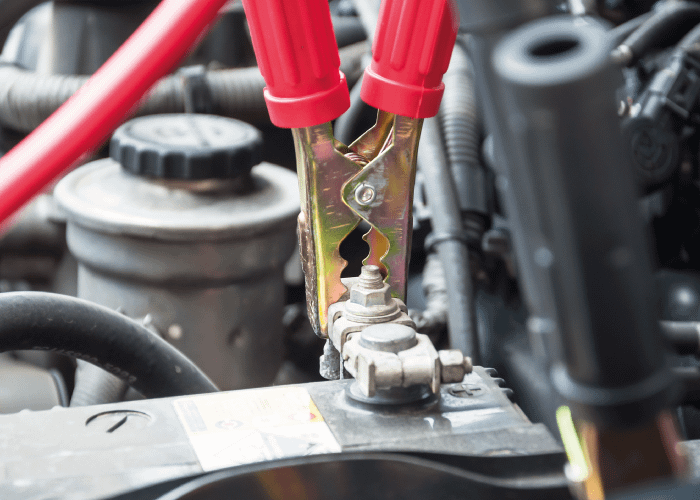
It’s a horrible feeling when your car won’t start at the very moment you need it most. A primary reason for this is down to a weak or dead battery, particularly during the cold winter season.
For most people who have breakdown insurance, recovery or replacement of a battery is only a phone call away. But what if you don’t have breakdown insurance or find yourself stuck in an area with low phone signal? Well, a jump start might be a way to fix this problem.
Take a closer look at our instructions on how to jump start your car the correct way.
1. Park both cars close to each other
Before you can attempt to jump-start a car, it’s important to find someone with a car of their own who is willing to help. Their car needs to have a fully charged battery with equal amounts of voltage as your own (generally 12 volts). It’s useful to park both cars close (without touching) so the batteries are within easy distance for the cables to reach. Remember, both vehicles need to have the handbrake on and the car off (this includes the Lights, Radio, Sat Nav etc).
2. Attach The Red Jump Lead
Connect one end of the red jump lead to the positive terminal (+) on the flat battery, while the other end of the red lead is connected to the working battery’s positive (+).
3. Attach The Black Jump Lead
Connect one end of the black jump lead to the negative (-) of the working battery, then attach the other end to a good earth point on the car with the problem (a solid unpainted metal on the engine block or chassis is usually best).
4. Turn On the Other Car
Try to keep both engines off for three minutes after connecting, then start the engine of the working car and let it run for 1 minute.
5. Turn On the Car with A Flat Battery
Now the engine of the car with a flat battery can be turned on.
6. Let both Cars Run
When both cars are running, leave them idle for around 10-15 minutes.
7. Turn Off and Disconnect
Switch off both vehicles and disconnect the leads in reverse order to the way they were connected. Disconnect the negative jump lead (black) first from the car which had the flat battery then finish with the red lead from the other car. Try not to let the end of the leads touch each other.
8. Restart the Car
Finally, try switching the ignition to see if the car will turn on.
9. Call for Help
Unfortunately, if the car is still not turning on it’s time to call for help.
Please remember, if you are uncertain about proceeding with a jump start, don’t attempt to do it. Find a safe area with good phone coverage and call a trained professional for help.